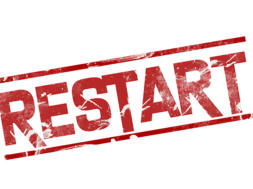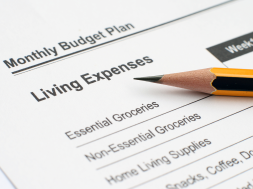
Personal Financial Programs that Work Effectively for Proprietary Schools and Students
By Peter Bielagus, Financial Advisor, Author, Speaker and Tamra Nashman, CAREER Instructor, Author, Speaker
Thirty years ago, it was popular to tell the incoming freshman class, “Turn to the person on your left and then to the person on your right. In four years, one of those people won’t be here.” Entire auditoriums of anxious heads would snap left and right, curious as to who didn’t have what it takes. The exercise served its purpose, to remind students of just how diligent they had to be in order to maintain their place in the institution.
Fast-forward to today, the diligence pendulum has swung the other way. It is the college admissions professionals who are nervous.
According to a recent study by the Bill and Melinda Gates Foundation, money management problems are now the number one reason for college dropout.
(Source: With Their Whole Lives Ahead of Them.) What makes this statistic unique from previous causes of dropout (bad grades, stress, alcohol or drugs) is the fact that the more diligent a student becomes in researching the true cost of college, the more likely they are to drop out.
The problem grows even stronger when mixed with media segments about the rising costs of college and the frightening hoard of unemployed or more commonly, underemployed students with mountains of debt. The check writers, their offspring, and the currently enrolled, stare at the TV screen and ponder the powerful question: “Is it worth it?”
Yes, it is worth it, and higher education professionals can take back control of the conversation and save many students from making the poor choice of dropping out halfway through or never attending at all. Millions of students are blindly hacking their way through the affordability forest; proprietary schools need only to give them the tools. One such tool is financial literacy – and the research reveals how powerful this is.
The National Endowment For Financial Education conducted a study in 2011 in cooperation with the University of Arizona. They found that when students are exposed to financial education at a young age, it creates a “snowball effect;” those students are more likely to seek out financial education on their own, once they’ve been given a taste.
These findings were confirmed again in 2014 with a 65,000 student survey by EverFi and Higher One. The survey revealed that students exposed to financial literacy “did better on the survey’s financial knowledge questions, were found to be more averse to debt, more likely to pay credit card bills on time, and less likely to go over their credit limit.” (Source: USA Today article April 8, 2014.)
Parents are jumping into the ring as well. In 2011, credit card giant VISA conducted a survey for parents. Their findings showed that 85 percent of parents believe a personal finance course should be a high school graduation requirement.
The case for financial literacy programs delivered at the college level could not be stronger, yet many institutions are reluctant to incorporate such programs. The two most popular reasons are time and money.
When an institution considers that it will lose more students because of money management problems than any other reason, it becomes not only apparent, but urgent, to take action.
Proprietary schools will soon find that a financial literacy program is money well spent. $1 spent up front, might save $5 on the back end.
Time, naturally, is the other precious resources. But higher education institutions needn’t shoehorn a whole new class into an already busy schedule. Many financial literacy programs are available online and are parceled into 5-10 minute segments, allowing students to complete these programs at their own pace in a non-disruptive format.
Flexibility, not time, is the real issue. Schools should look for a program that offers its lessons in small, palatable segments. This will allow educators to slip an e-learning program into any existing curriculum. While the lessons should all tie together into one complete course, lessons should also be able to stand on their own.
Once the obvious hurdles of time and money are overcome – and there is a plethora of programs that can accommodate both constraints – what else should a school consider when choosing or creating a personal finance curriculum? What areas of personal finance should receive the most attention?
In evaluating a personal finance program schools should pay attention to programs that will produce actual results and not just convey information. Sadly, while many programs can accommodate the time and money limitations, inspiration, entertainment, and real world action items are often the missing components from these programs. A financial literacy program that fails to address these hurdles will prove, in the long run, to be ineffective.
Proprietary schools should give points for any course that scores high on the fun scale. Programs that incorporate jokes (all too often a rarity in personal finance education) will go far in inspiring students. They are expecting it to be boring. When they are suddenly shown a humorous video clip, or stumble across a joke answer in a multiple-choice quiz, they wonder just how many other fun surprises are hidden within the course.
Another way a course can stimulate and maintain interest is to provide specific action steps for everyday financial occurrences.
These steps can be tasks like checking a credit score, registering at www.optoutpresscreen.com (which prevents credit card companies from sending you “pre approved” credit card offers) and typing in their name at www.unclaimed.org (to see if they or their parents have any unclaimed money being held in their name.) Simple, practical, and instantly gratifying tasks such as these should be sprinkled throughout a financial literacy program. A program that leans too heavily on the old “invest $2 a day for 30 years” spiel will trigger a monsoon of rolling eyes.
Checklists are another crucial part of any personal finance education program. A checklist paves the road of action and gets students out of the land of theory only. Worksheets for common, everyday financial occurrences, such as buying a car, or renting an apartment, will travel with the student even after the financial course is over. When it finally comes time to buy that car, a student is far more likely to bring the checklist than she is to revisit the entire lesson on car buying.
Here is a sample checklist:
Apartment Rental Checklist – What to do when looking at an apartment:
____ Turn on faucets.
____ Flush toilet (If a bubble of air pops up that means the toilet has been improperly vented).
____ Turn on stove and make sure it works.
____ Turn on all lights.
____ Look in the closets for water damage (often landlords forget to paint over water damage in the closets).
____ Check the basement.
____ Which way does the apartment face? (Many prefer a sunset view.)
____ How far is it from the stuff you want? Subway, bus stop etc.
____ Ask the current tenants why they’re moving out.
____ Talk to neighbors if you can.
What to look for in the lease:
- Who pays for utilities?
- How long must they notify you (or you them) about renewing?
- Can they increase the rent to any amount next year?
- Are there any special items not allowed in the apartment – pets, waterbeds, aquariums, etc?
- How much are the average heating/electric bills? (Fill in above.)
- Can you sublet? (Rent out your unit to someone before your lease is up in the event you move?)
Educators must remember that the silver lining in personal finance education is that it answers the timeless student question, “when am I ever going to need this?” Courses that provide not just information, but the resources to solve financial problems, will quickly turn financial education into financial action.
Imagine this example. Your school might have a 20-year-old student who is being chased by a collection agent for $250. The hard truth is that most personal finance courses would not be able to help this student, and yet, that small $250 debt is going to make a train wreck of her financial life. Most personal finance courses are too general and they don’t provide practical, real world advice, for real world situations. What this 20-year-old student needs is not a light lesson on budgeting or the benefits of saving 10 percent of her income. She needs an actual script to use as a guide when she contacts the collection agent and she needs the supporting follow up letters to send after the call.
In short, educators should look for a personal finance course that actually solves real world problems as opposed to one that merely conveys information.
Problems such as:
- Home purchase
- Car purchase
- Getting married
- Starting a family
- Debt recovery
- Paying taxes
- Credit scores
- Student loans
- Retirement planning
Another consideration for any proprietary school considering a personal finance program is to pick a course that stresses the importance of declaring tip income. Many for-profit colleges are in an unfair situation. They must be able to prove their students are earning adequate incomes to support their student loan payments, yet many recent graduates fail to declare 100 percent of their tip income. They are earning enough money, however they are simply not reporting it. It is not the school’s fault, but it is the school’s problem. This issue is of the utmost importance to schools who provide degrees to any industry served largely by tip income (cosmetologists, massage therapists, etc.)
It is no easy task to convince a 23-year-old to essentially increase her tax bill by declaring tip income, but a steady review of the facts can go a long way. Most Americans, regardless of their age, don’t know the IRS uses a sophisticated algorithm call a D.I.F. Score to determine which tax returns are audited. Tip heavy industries such as waitressing, cab driving, cosmetology and massage therapy are already in the cross hairs. What’s more, individuals who make less than $25,000 a year have a greater chance of getting audited than those who make between $25,000 and $75,000.
Higher education is in the midst of massive change. Competition from e-learning sources, rising tuitions and skeptical students who are questioning the return on investment are just some of the factors forcing proprietary schools to rethink their business models. While there is no magic bullet to these challenges, implementing personal finance education can serve as a simple, affordable, and powerful solution.

PETER BIELAGUS has been educating Americans about their personal finances for the past seven years. A former fee-only financial advisor, Peter now travels the globe delivering keynotes and workshops at colleges, corporations, independent schools and military bases all over the world. He has spoken in Japan, Korea, the Middle East, Europe, in 48 States, and even on military ships at sea. Peter is the author of two books and has been featured in the Wall Street Journal, PBS, USA Today and many other media outlets. Peter’s goal is to improve American lives through financial education.
Contact Information: Peter Bielagus // Getting Loaded Project // 603-606-5685 // peterbielagus@gmail.com // www.GettingLoadedProject.com

TAMRA NASHMAN holds a Master’s degree and is a University-level educator. She has 25 years as a broadcast media and advertising talent and has worked for some of the biggest companies in the world. Tamra has spent many years successfully speaking and teaching students and various groups across the country how to put their best foot forward in the interview process. Having nearly 300 interviews with some of the biggest global companies during her media/advertising tenure-no one is more knowledgeable at preparing students for interviewing, resume writing, social business etiquette, marketing and personal presentation. She has worked for national clients such as Coca Cola, Hertz, Natural Sport, Lincoln Mercury, Canon, and numerous others. Tamra is a published author and columnist and is currently hosting her own regional show on the Fox network.
Contact Information: Tamra Nashman // Getting Loaded Project // 603-606-5685 // reachtamra@gmail.com // www.GettingLoadedProject.com










